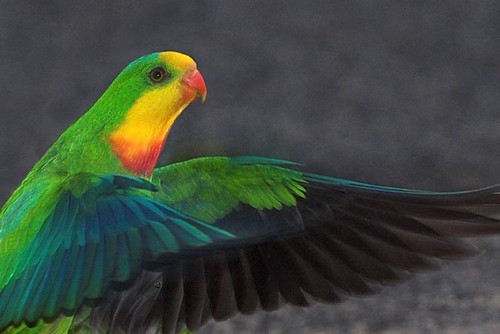 Like many countries, Australia is trying to juggle environmental protection with economic growth. A government decision to ban logging to protect a rare parrot has prompted arguments that hundreds of workers will lose their jobs.
Like many countries, Australia is trying to juggle environmental protection with economic growth. A government decision to ban logging to protect a rare parrot has prompted arguments that hundreds of workers will lose their jobs.
The superb parrot is a striking-looking bird found in woodland areas of Australia's southeast.
The color of bright green grass, the parrot is under threat from land clearing and lack of new growth in its woodland habitat.
The Australian government wants to protect the species by banning logging in wetlands near the New South Wales town of Deniliquin, 725 kilometers southwest of Sydney. The area is a key breeding site.
The decision has angered the timber industry, as well as the New South Wales state government, which say the ban is unnecessary and will damage the local economy.
Federal Environment Minister Peter Garrett is not willing to back down but is keen to explain his reasons to his detractors.
"The most important thing here is to make sure that we resolve this issue as quickly as possible, bearing in mind that protection of jobs is critical, bearing in mind that proper consideration of the environment is critical as well," he said. "I'm confident we can do that. It is a question of balance."
Satisfying the concerns of conservationists and the need to safeguard employment during a time of recession is not likely to be easy for the Australian government. It is a problem many countries confront these days, both rich and poor.
Opponents of the ban say the superb parrots nest in trees along the edge of the forest and that logging operations do not disrupt its habitat.
Greg Hunt, the federal opposition's environment spokesman, says protecting jobs should be a priority.
"This is a parrot which the Government's own Web site says is in abundance to the extent of thousands and thousands," he said. "It has the second lowest category on the threatened species list and so Mr. Garrett is trading 1,000 jobs for the emotional health of a parrot, good luck to him."
Forestry official warn that 11 sawmills in the region would be forced to close because of the ban, causing the collapse of an industry worth $100 million (Australian) to the local economy.
Green groups say there are fewer than 5,000 breeding pairs of the superb parrot left in the wild. In Australia, it is listed as a vulnerable species.